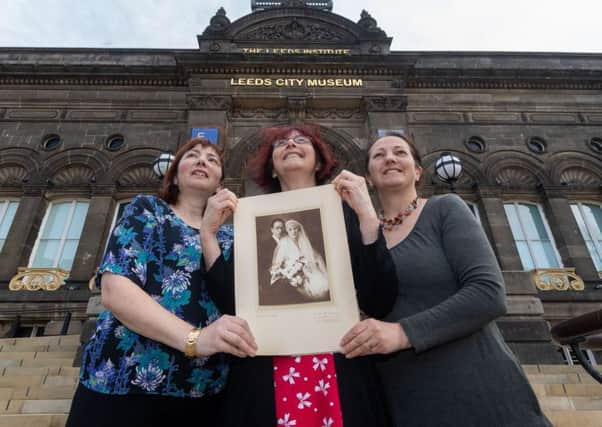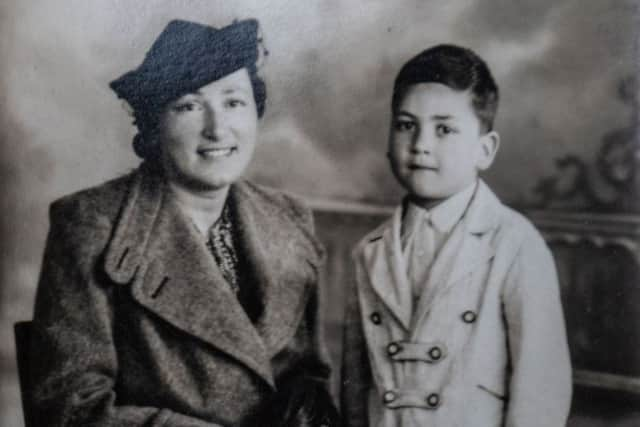Who else did ‘Schindler of Leeds’ save from Nazis?


Yet the story of Philip Boyle, a hemp merchant from Leeds at a time when its economy turned on textiles, is itself just a piece of a larger jigsaw puzzle that is only now starting to be assembled.
An exhibition being mounted for the summer will attempt to draw together the strands of three centuries of immigration into the West Riding – from the famine across the Irish Sea, through the world wars to the arrivals of the Windrush era.
Advertisement
Hide AdAdvertisement
Hide Ad“There were big movements of people into Leeds – from Ireland, eastern Europe, Saint Kitts and Nevis – but what’s so amazing is that there’s so much personal detail. That’s often what is missing,” said Ruth Martin, exhibitions curator at Leeds City Museum, where A City and its Welcome is taking shape.


It was after an appeal for personal stories that might be included that Harriet Stevens, a civil servant from Bristol, came forward. She and her two sisters had discovered that their grandparents’ arrival in Leeds had been arranged through the “sponsorship” of Mr Boyle, brother of the Lord Mayor and proprietor of a long-established hemp and flax spinning business in a former mill on Sovereign Street, near Leeds Bridge.
Siegfried and Hedwig Schrotter, the sisters’ grandparents, were fleeing their home in Vienna before the Nazis overran it. Their only child, six-year-old Eric, was with them. Mr Schrotter was a commercial traveller dealing in hemp, and a business partner of Mr Boyle.
They moved into his home at Linton, near Wetherby after Mr Schrotter managed, to negotiate safe passage to England for his wife and son.
“Our grandfather never really recovered,” said Mrs Stevens.
Advertisement
Hide AdAdvertisement
Hide Ad“He’d had to leave Vienna after Kristallnacht, in November 1938, when they smashed up Jewish property. He left my grandmother and my father behind so he could get away, and he went to Switzerland.
“He did manage to get them out, but to us growing up he was always reclusive, incredibly quiet and reserved, and dad used to say he was never quite the same afterwards.”
The sisters recorded an interview with their late grandmother – four of whose five siblings died in the Holocaust – but something she said was lost on them at the time.
“She said Mr Boyle saved five Jews. Now, my family’s three. So there’s a big mystery as who these other people were – we know nothing about them, Mrs Stevens said.”
Advertisement
Hide AdAdvertisement
Hide AdToday, she and her sisters, Rachel and Jessica, will visit the West Yorkshire Archive to examine refugee papers in the hope of finding clues.
“Our grandmother took the secret to the grave with her,” Mrs Stevens said. “It hadn’t been on our radar, but once I started researching it, I became fascinated by these people.”
The sisters believe they have traced one of Mr Boyle’s descendants, who knew little of what had happened. Even their own father, who died last year at 83, had scant memories.
Like many arrivals to Britain before and since, Siegfried Schrotter was briefly interned in Britain before joining the Pioneer Corps, the army unit established at the beginning of the Second World War to carry out light engineering tasks.
Advertisement
Hide AdAdvertisement
Hide AdHis sponsor family had also experienced political dissent. Boyle and Sons could trace its roots back to Humphrey Bellamy Boyle, a self-taught radical thinker who had gone to jail for publishing pamphlets based on Thomas Paine’s Rights of Man, which were considered “seditious and blasphemous”.
Ms Martin said: “We have many items in our collection relating to people who arrived from Ireland and eastern Europe.
“We have far less about those who only moved here in the last 50 years. We hope that people will come forward with many more.”
Judith Blake, leader of the city council, added: “The foundations of Leeds were built by thousands of people who came here determined to forge a new life.
Advertisement
Hide AdAdvertisement
Hide Ad“Their influence has permeated so many aspects of our local history and heritage and it’s always a poignant experience to find out more about their stories and to learn how immigrants helped shape the city we live in today.”